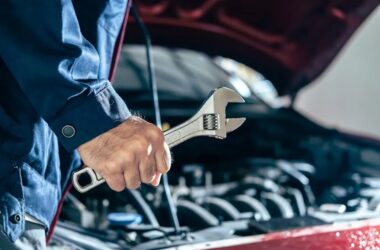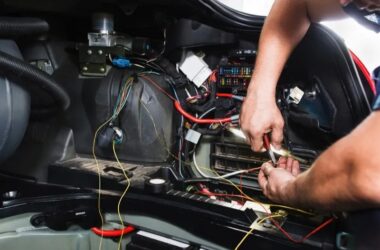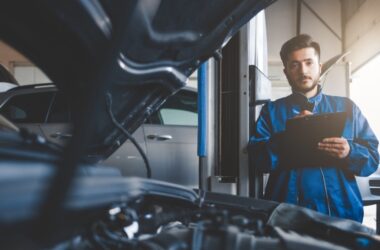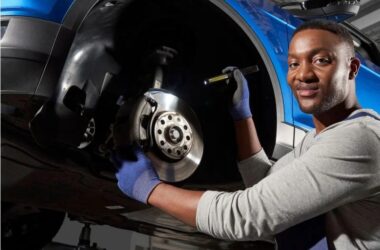How long do tyres last in years and what’s the car tire’s life-span? To make this even more easy, many tyres include tread wear signs (small bars across the grooves of the tyre, at precisely 1.6 mm). Once the tread wear indication is flush with your tread, it’s time to change your tires.
If your tyres are more than 5 years of ages, they should be inspected once annually. If your tyres are more than ten years old, you should take up a tyre change service for your car. Even if they still have tread, rubber weakens and splits with age, so it’s best to just replace them.
Establishing the inflation force
Maintaining the appropriate inflation force is among the most important points you can do to look after your tires.
An appropriately inflated tyre should wear uniformly throughout the tread, however one that’s incorrectly inflated will wear unevenly.
An under-inflated tyre will degrade a lot more greatly on the external shoulders, while an overinflated one will wear more in the middle of the tread.
The inflation pressure should only be established when the tire is cold. The force increases when the vehicle is steered, so establishing it after driving for some length will result in a wrong force
Rotating your tires
Tyres wear at various rates depending upon their setting on the vehicle. On a rear-wheel drive vehicle the back tires wear faster than the front tyres; on a front-drive vehicle it’s the front tires that wear the quickest.
Rotating the tires around the automobile can level the wear on all tires. In this way they should all require replacement at the same time. If you do rotate your wheels do it frequently, at 5000km intervals, so the disparity in between those that are wearing the speediest and those wearing the slowest is minimised. When rotating your tyres you can likewise include the spare.
Since your tires wear differently depending upon their placement, it’s ideal to rotate them sometimes to even out wear. For example, if your vehicle is a rear-wheel drive, your back tires will wear faster (and the other way around for front-drive automobiles). Rotating tires is best done consistently to lessen distinction in wear between front and rear sets of tires. The more frequently you rotate, the more even wear you’ll get (and far better efficiency out of your tyres). The pattern of rotation depends upon whether your car is front wheel drive, rear wheel drive, and directional or non-directional tyres.
Other Factors
Driving design
To maximise your tyre life avoid spinning the wheels on acceleration, or locking them when stopping.
Preserving your car
Keeping your vehicle in great shape can aid prolong the life of your tires and frequent wheel alignment check-ups are a good idea.
Examining your tyre alignment
To truly obtain the most out of your tyres, examine your alignment (ideally every 5,000 kilometres). This goes a long way towards obtaining much more even wear on your tyres and maximising your efficiency. Wheel alignment has 3 components:
- Camber (vertical tilt inward or outward)
- Toe (like being pigeon-toed or duck-footed in individuals)
- Caster (displacement from the steering axis)
Troubles with tire alignment materialize as wobbling, pulling to one side, or your wheels not right after straightening out of a turn. Having unaligned tires results in unwanted, unequal wear patterns like cupping, feathering, one-sided wear, and others. This uneven wear decreases the efficiency of your tyres, your automobile, and wears down your tires faster. Obtaining your tyres straightened can be pricey, yet is well worth the expense.










